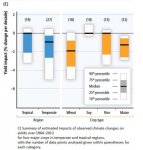- Joined
- Oct 23, 2015
- Messages
- 3,931
- Reaction score
- 1,260
- Location
- Oz
- Gender
- Male
- Political Leaning
- Undisclosed
The warmists have yet to muster the courage to address the OP argument.
What's the argument Jack? Please 'muster the courage' to detail it in your own words - because you haven't addressed or discussed anything. Just copy and pasted other people's words from your favorite climate truther blog (which you probably didn't even read anyway).

